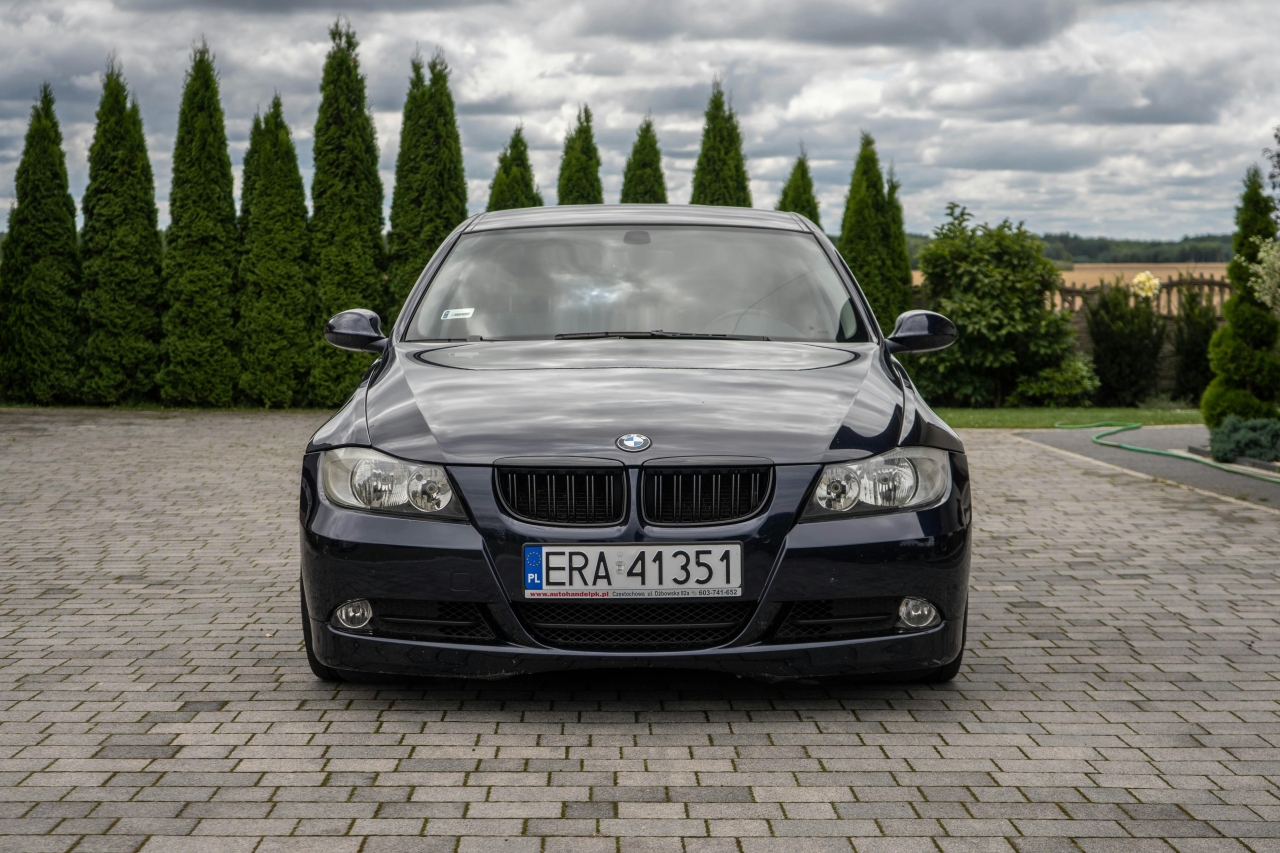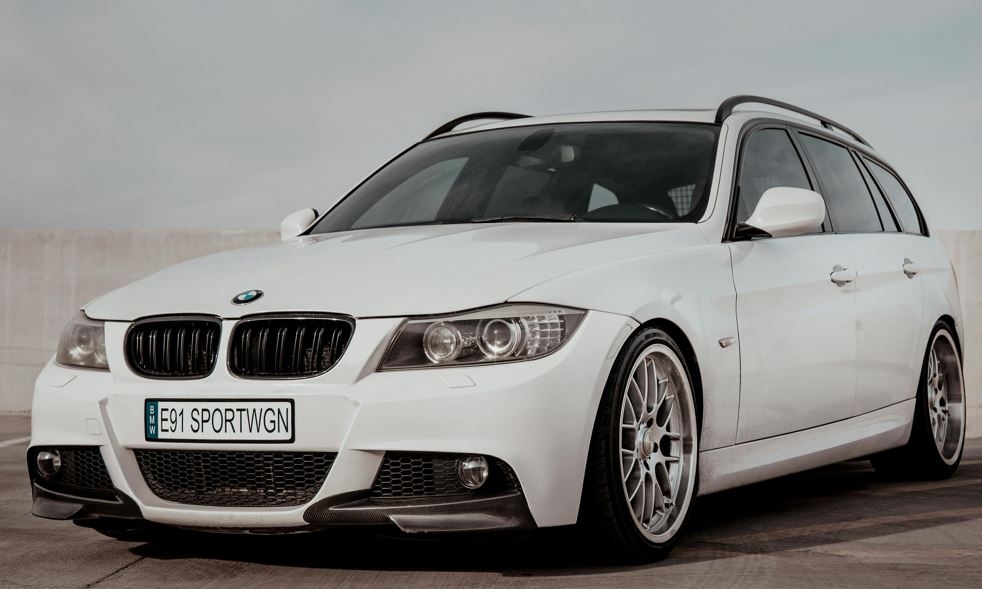Youngtimers – cars from two decades ago – are making a comeback today because they combine old-school character with the convenience of modern driving. Restoring them no longer requires hunting for expensive "new" models – used car parts allow you to refresh the drivetrain, interior, and electronics on a reasonable budget. BMW, Mercedes, Audi, MINI, and VW all have extensive catalogs of original aftermarket parts, ensuring the design retains factory fit. Importantly, many new references for older model years are limited in production – so the advantage of used models also lies in their real availability. Below is a structured plan: from the investment's rationale, through decisions and compatibility, to practical scenarios with examples. Finally, a short set of questions and answers prepared for drivers and workshops.
Why is it worth buying a youngtimer?
Benefits of investment
The power of simple, classic solutions and the comfort of today's roads – this is the mix that attracts youngtimers . Refreshing the suspension, drivetrain, and cabin restores the "factory" driving experience without sacrificing everyday practicality. Used car seats, a used steering wheel, or rims immediately improve the quality of the relationship with the car. And because original parts are often no longer in production, the secondary circuit becomes a natural source of compatible components. Youngtimers benefit from original, second-hand parts, as this is the shortest route to a "stock" effect today.
Costs, availability, quality
Used OEM replacement parts reduce search time and maintain factory mountings – installation is predictable. For the 1998–2012 model years, many new references are limited or replaced by newer generations, while the aftermarket still provides a specific index. This means that upgrading a Youngtimer doesn't require compromises on fitment. The benefit lies not only in price, but also in the timing: the part "is there," fits, and can be installed without modifications. The aftermarket wins not on price alone, but on the combined benefits – availability, fit, and speed of work.
Purchasing decision
Where to start?
First, the core: the car's engine, drivetrain, and brakes. For the BMW E90 and BMW 335i, "mechanics + wheels" packages make sense, and for the N47 diesels, accessories service and only then cosmetics. Then comes the styling and contact: used BMW steering wheels, seats, and cabin details that match the model year. Finally, the comfort and body electronics – rear electronic module, door modules, multimedia panel – all within the same family. If availability is lacking, a complete " car for parts " can be a source of rare details.
OEM numbers, models, years
Compatibility is determined by three filters: platform, equipment, and parts index. The differential ( differential, differentials) is selected based on gear ratio and flanges; in the electronics, on HW/SW and year. In the cabin, the key factors are SRS airbag types, occupancy mats, and MFSW control. Wheels are matched to ET and width: a BMW E60 rim, BMW E90 rim, or BMW E36 rim requires matching to the suspension. In period style, the iconic 37 styling fits because it was created for this range. This methodology limits modifications and prevents generation mix-ups.
Installation and procedures
Steps, risks, when to service
Mechanics: disassembly, alignment, torque specifications – no shortcuts. Suspension and differential alignment should be done fresh. Body electrical systems (e.g., rear electronic module) may require coding for specific equipment, and multimedia systems may require matching the unit, screen, and controller. In the cabin, work on the SRS and SBE mats requires a workshop: disconnecting the power supply, discharging, and following manufacturer procedures. This ensures the car is back on the road without flashing warning lights or unwanted noises.
Real life scenarios
BMW: The 6-cylinder M54B25 / M54B30 designs and light intake upgrades blend naturally with the interior and rims; for the E46, a sensible compromise is a BMW E36 rim or a stylistically similar design. The E90 opts for BMW E90 rims and a quieter cabin – resulting in everyday refinement. Mercedes: A limousine with a fixed differential and comfortable seats covers hundreds of kilometers without tiring. Audi/VW: Updating the head unit and screen brings back the "new" UX without breaking the factory. MINI: A sporty wreath and "sport" seats provide fun on the weekend, without tiring during the week.
Comparing options
What really makes a difference
If a component affects handling or safety – suspension, steering, brakes, differential – the original usually wins in terms of fit. Interfaces are key in electronics, and ergonomics and color schemes are key in the interior. Wheels improve the car's feel and actual ride comfort, but only if the Emissions and width match the suspension geometry. Upgrading makes sense when it doesn't randomly break up the catalog into generations. In short, the key is integrity – both technical and aesthetic – not a single "flashy" element.
Table – youngtimer in practice (models, categories, tips)
| Brand/model | Key categories | Examples of elements | Compatibility Tip |
|---|---|---|---|
| BMW E90/E91 | drive, wheels, cabin | e90 bmw 335i, bmw e90 engines, used steering wheel | controllers and airbag from the same family |
| BMW E46 | engine/gearbox, rims | BMW E46 engine, BMW E36 rim | ET and width selected for suspension |
| BMW E60/E61 | suspension, rims, interior | BMW E60 rim, styling 37 | Steering column and MFSW – compatibility |
| Mercedes W211 | seats, drive | sets with memory, differential | memory and comfort modules from one era |
| Audi A4/A6 | multimedia, seats | panel + screen, family seats | SRS harnesses and mats depending on the year |
| VW Golf/Passat | wheels, audio | set of rims, main unit | CAN/MOST in the same generation |
| MINI R/F | wreath, seats | sports wreath, "sport" seats | R vs F differences in harnesses and connectors |
Mistakes and myths
The most common mistakes – briefly and specifically
Myth 1: "Any controller from this brand will work." – HW/SW and year determine parameterization.
Myth 2: "A differential is always a plug-in." - The gear ratio and flanges must match.
Myth 3: "Every rim fits nicely." - The ET, width and suspension geometry will decide.
Myth 4: "The interior is just screws." - SRS and occupancy mats require procedures and tools.
Myth 5: "Replacement = faster." - A period original is sometimes faster to install because it holds the points.
To summarize: 90% of problems disappear when you stick to one family of parts and assembly parameters.

FAQ – the most frequently asked questions by car enthusiasts
| Question | Answer |
|---|---|
| What is a rear electronic module ? | Rear body functions controller (lighting/comfort). Selection is made easier by the equipment index and family. |
| Can I replace the differential without any extras? | Yes, if the ratio and flanges match; otherwise, additional work and geometry will be required. |
| Do used BMW steering wheels require coding? | When changing the airbag type or MFSW button logic, this is usually the case – it's a short procedure. |
| Will a period rim improve comfort? | Yes, if the ET and width are within spec; you will avoid rubbing and maintain handling. |
| Will I still find something in BMW for older models? | Yes – there are BMW parts for the E and F series in circulation; with engines (e.g. N47 ) and accessories it is still possible to close projects. |
| What about wheels for E60/E90? | The BMW E60 rim and the BMW E90 rim work if you set the correct ET; styling 37 gives you a "period look". |
Operation and service
How to maintain the effect for years
After a modernization, it's worth scheduling inspections: geometry after every major repair, wheel torque checks, and wiring harness inspections after an electronics retrofit. The drivetrain rewards you with quiet operation when the differential and driveshafts receive fresh oil and the tires are properly inflated. The cabin stays "like new" longer if leather and plastics care products are matched to the materials of the era. To sum up: the service plan after the modernization is just as important as the parts list – it maintains the effect. The quickest way to rejuvenate your Youngtimer is to use a set of compatible, original aftermarket parts and install them in a "family" fashion. Global Parts advisors will help you select drivetrain, electronics, and cabin components for your model year, so that your car retains its identity and returns to the road with its former freshness – quickly, predictably, and without unnecessary modifications.
